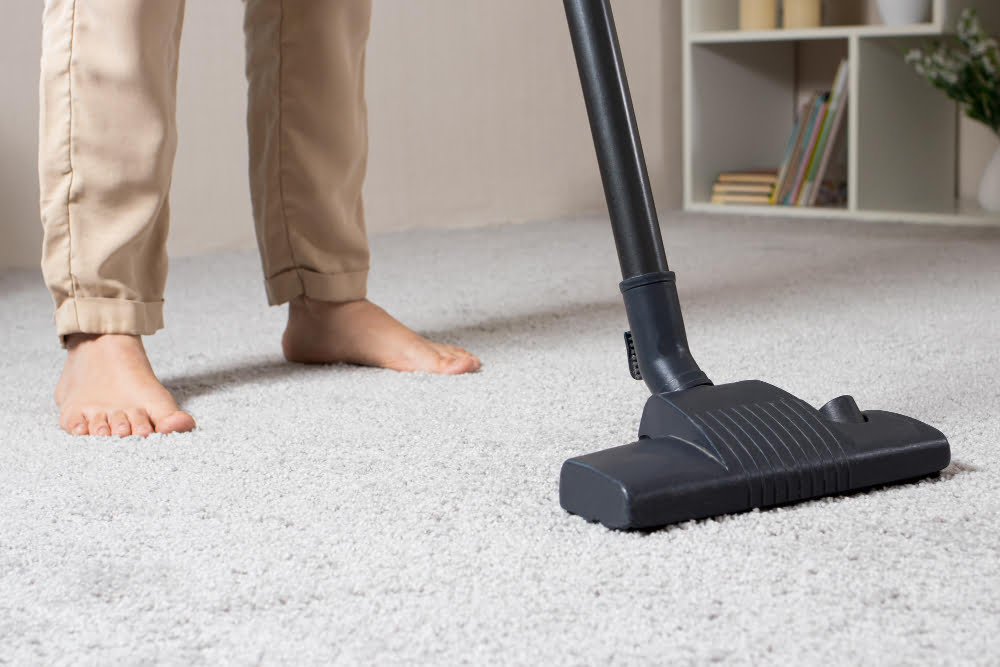Last updated on
Carpets can truly transform a space, offering a sense of warmth, comfort, and aesthetic appeal. However, maintaining their lustrous appearance can sometimes feel like an uphill climb, especially with the constant threat of spills, stains, and daily wear and tear.
This guide aims to shed light on effective strategies and proven methods to keep your carpets looking brand new, ensuring their longevity and preserving their fresh out-of-the-store appeal. Let’s dive into the world of carpet care and explore the best practices to keep them in pristine condition.
Regular Vacuuming

One of the simplest and most effective ways to maintain the appearance of your carpet is regular vacuuming. This not only removes dirt and dust particles that can accumulate and cause the carpet fibers to look dull, but it also helps in maintaining the texture of the carpet. Vacuuming at least once a week is recommended for areas of high traffic, while less frequented areas might only require fortnightly cleaning.
However, it’s essential to use the right vacuuming technique to protect your carpet’s longevity. Always vacuum in a ‘W’ pattern to ensure you’re covering the entire surface evenly and multiple times.
Also, remember to adjust your vacuum’s height settings according to your carpet’s pile height to avoid damaging the fibers. When it comes to carpet cleaning, consistency is key. Keep up with a regular vacuuming schedule, and your carpets will thank you for it.
Spot Cleaning
No matter how careful you are, spills are inevitable. When they occur, it’s crucial to act quickly. The longer a stain is left untreated, the harder it becomes to remove. Always blot, never rub, the spill as rubbing can cause the stain to spread and the carpet fiber to fuzz.
Using a mild detergent or a carpet cleaning solution, gently dab at the stain from the outside to prevent spreading. Remember to test any cleaning solution on an inconspicuous area of the carpet first to ensure it won’t cause discoloration.
Professional Cleaning

Despite your best efforts, there may be times when a professional carpet cleaning service is necessary. Professionals have the tools and knowledge to deep clean your carpet, removing dirt and allergens that vacuuming alone can’t handle. It’s advisable to have your carpets professionally cleaned once every 12 to 18 months, depending on their use and condition.
Bear in mind that not all professionals use the same cleaning methods. Some might prefer steam cleaning, while others might use a dry cleaning method. Both have their pros and cons, so it’s best to research and choose a method that suits your carpet type and personal preferences.
Preventive Measures
Prevention is always better than cure, especially when it comes to carpet care. Using doormats at entrances can help trap dirt and moisture, reducing the amount of grime that gets onto your carpet. Alternatively, implementing a ‘no shoes’ policy can significantly decrease the amount of dirt brought into your home.
Another practical preventive measure is the use of carpet protectors. These can be particularly beneficial in high-traffic areas or under heavy furniture, reducing wear and tear. Carpet protectors also make spill cleanup easier, giving you a little more time to react before the liquid seeps into the fibers.
Keeping your carpets looking brand new is an achievable task with the right methods and a little diligence. By incorporating regular vacuuming, prompt spot cleaning, periodic professional cleaning, and some essential preventive measures into your carpet care regimen, you can significantly enhance the lifespan and appearance of your carpet.
Remember that every carpet is unique, and so are its care requirements. Always pay attention to the specific cleaning instructions and recommendations for your carpet’s material. Ultimately, a well-cared-for carpet not only improves the aesthetic appeal of your home but also creates a more comfortable and healthy living environment.
Recap:



